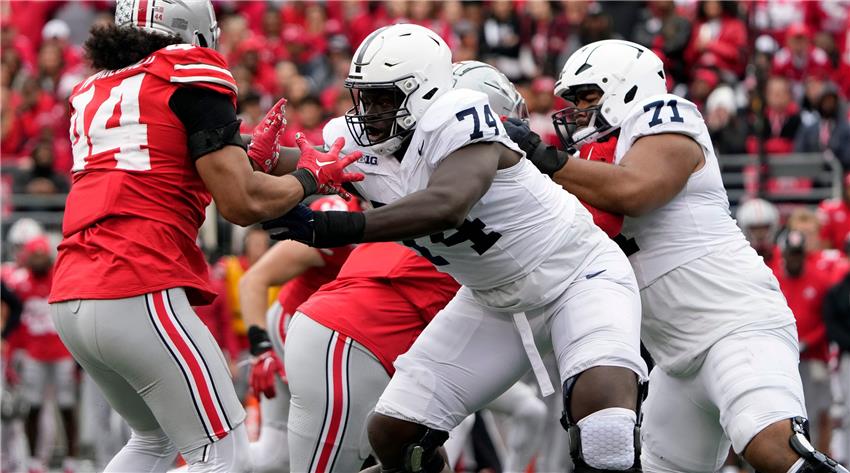
The State of Eye Health in the NFL- What Can Be Done About It?
Sports eye injuries are more common than you might think. America's ERs accept 30,000 such injuries every year, and they can significantly affect a player's career
When a line drive hit Cleveland Indians pitcher Herb Score in the face, for example, it caused eye hemorrhaging and fractured his orbital bones, effectively stopping his baseball career from reaching new heights. Boxing Hall of Fame athlete Sugar Ray Leonard also suffered a sparring injury that partially detached the retina in his left eye. Though the surgery he underwent to fix it was successful, he never performed at the same caliber again.
Football players are even more vulnerable (although maybe not as vulnerable as boxers). Given how intense football is compared to other contact sports, the American Academy of Ophthalmology (AAO) categorizes it as ‘posing moderate risks for eye injuries’. That doesn't just include getting hit in the face with a football, either. The after effects of concussions can also impact a player's vision health. That's especially concerning given how common concussions are in football. The New York Times reports that 219 cases were reported in 2023 alone. A typical NFL season often involves just under 300 games, so that's an especially high number.
That begs the following questions: what's the current state of eye health in the NFL? How is the NFL addressing it—and are there better solutions that can improve what they do about it?
How do head and eye injuries affect football performance?
The state of eye health in the NFL is primarily influenced by the high risk of head and eye injuries among football players. Blunt eye trauma caused by footballs is arguably the most direct way to incur an eye injury. Of course, it can cause minor damage like bruising, swelling, and redness. However, more severe football impacts can go further by scratching the cornea, giving bacteria a means to enter and infect the eye. They can also detach the retina from the eye itself—which, as mentioned above, requires surgical intervention.
Though not as directly linked to vision health, concussions can also lead to sports eye injuries. Audiologist Amy Boudin-George from the Hearing Center of Excellence notes that even mild concussions, beyond affecting how the brain processes sound, can impact how it controls the eyes. That can ultimately worsen not just the player's vision, but multiple other senses, negatively affecting how they perform during games.
These kinds of eye injuries can cause intermittent blurred or double vision and increased sensitivity to light, which can affect a football player's ability to clearly see the field in sunny conditions. They can also impact the way players understand how a game is unfolding and how they decide to respond to their environment. Worryingly, eye injuries can also reduce one's field of vision, rendering players incapable of detecting opponents approaching from their flanks. Surgical interventions may also put them out of commission for prolonged periods, causing them to miss key matches during NFL season.
Perhaps even more notably, both concussive and non-concussive football eye injuries can permanently alter a player's vision. A study led by University of Rochester Medical Center ophthalmologist Rajeev Ramchandran found that head injuries can thicken the macula, which is responsible for central vision, as well as the optic nerve. That impacts their structural integrity and makes the eyes more vulnerable to developing blindness-causing conditions—like macular degeneration and glaucoma—that may end one's NFL career altogether. Today's players are fully at risk of these adverse health outcomes amid the continuing prevalence of head and eye injuries in the sport.
What can be done to improve the state of eye health in the NFL?
Holistic concussion treatment
Health is among the NFL's top priorities when it comes to ensuring peak performance on the field. That's why initiatives like its Total Wellness program provide access to the treatment they need to prevent issues and treat injuries. Like the NBA, for example, it conducts mandatory vision tests to ensure players benefit from clear eyesight during games. The NFL's concussion protocol also requires teams to assess players during matches, which involves escorting affected individuals into the locker room, calling on a dedicated neuropsychologist to detect brain injuries, and providing them the necessary medical attention. However, it can improve upon that even further by prioritizing player eye health through more holistic concussion treatment plans.
That can include the provision of tools that can supplement lost senses. Given how concussions affect both sight and hearing, one thing NFL teams can do is offer players hearing aid glasses that integrate both vision correction and hearing assistance. The ones from Nuance illustrate how features like beamforming technology that cuts out background noise—something that dampens the effectiveness of traditional hearing aids—as well as specialized photochromic lenses that can aid eyesight amid increased light sensitivity, can help enhance the senses to prevent further injuries during recovery.
NFL neuropsychologists can also start directing players to optometrists and ophthalmologists with experience in concussion-related eye trauma, as they'll have more of the specialized knowledge needed to provide more effective treatment advice. That can aid in speeding up how quickly the eyes heal. Aside from helping them get back in the game faster in ways that help them perform better than ever, that can be especially crucial for players given that recovery progress can significantly affect their NFL draft positions—and, ultimately, their recruitment prospects.
Appropriate equipment use on the field
Preventing both concussions and blunt eye trauma on game day itself is something the NFL can tweak when it comes to addressing the state of eye health among its players. One key aspect here involves the use of visors. Though the AAO recommends these accessories for preventing a football from hitting the eyes, it notes that adding them to helmets is still optional for the league's many teams. By making visors mandatory on the field, the NFL can deepen its commitment to player health and lower their risk of incurring eye injuries.
One thing the NFL does do right, however, is how it helps players don protective eyewear on the field. In 2023, it renewed its partnership with industry leader Oakley. The activewear brand will now remain the NFL's official eyewear provider until 2030. That means players can benefit from its dedicated, polarized sports sunglasses for the next few years. Because they use its patented Prizm lens technology along with wider wraparound designs, these specs are key pieces of equipment that can help provide clear vision even in sunny conditions while protecting more of the eye area from physical injury. That can help boost the effectiveness of traditional football items like eye black, which help eliminate the sun's glare for better eyesight, and visors —helping further improve player vision health and performance on the field.
Additional sports vision training
One final thing the NFL can do to address the state of eye health among its teams is to encourage the widespread use of sports vision training. This method is specifically designed to hone some of the key visual skills football requires, such as hand-eye coordination, reaction time, peripheral vision, depth perception, and visual memory. In doing so, players can better assess game conditions, detect movement on both sides of the field, and use visual information to improve their performance.
More importantly, the improved reaction time sports vision training provides can help players anticipate footballs coming their way. That means they can potentially avoid incoming footballs from hitting their eyes in the first place, further minimizing their risks of running into blunt eye trauma and preventing injuries that can put them out of a game altogether.
